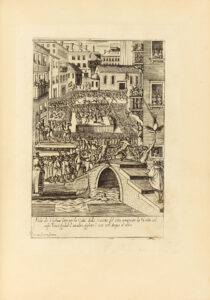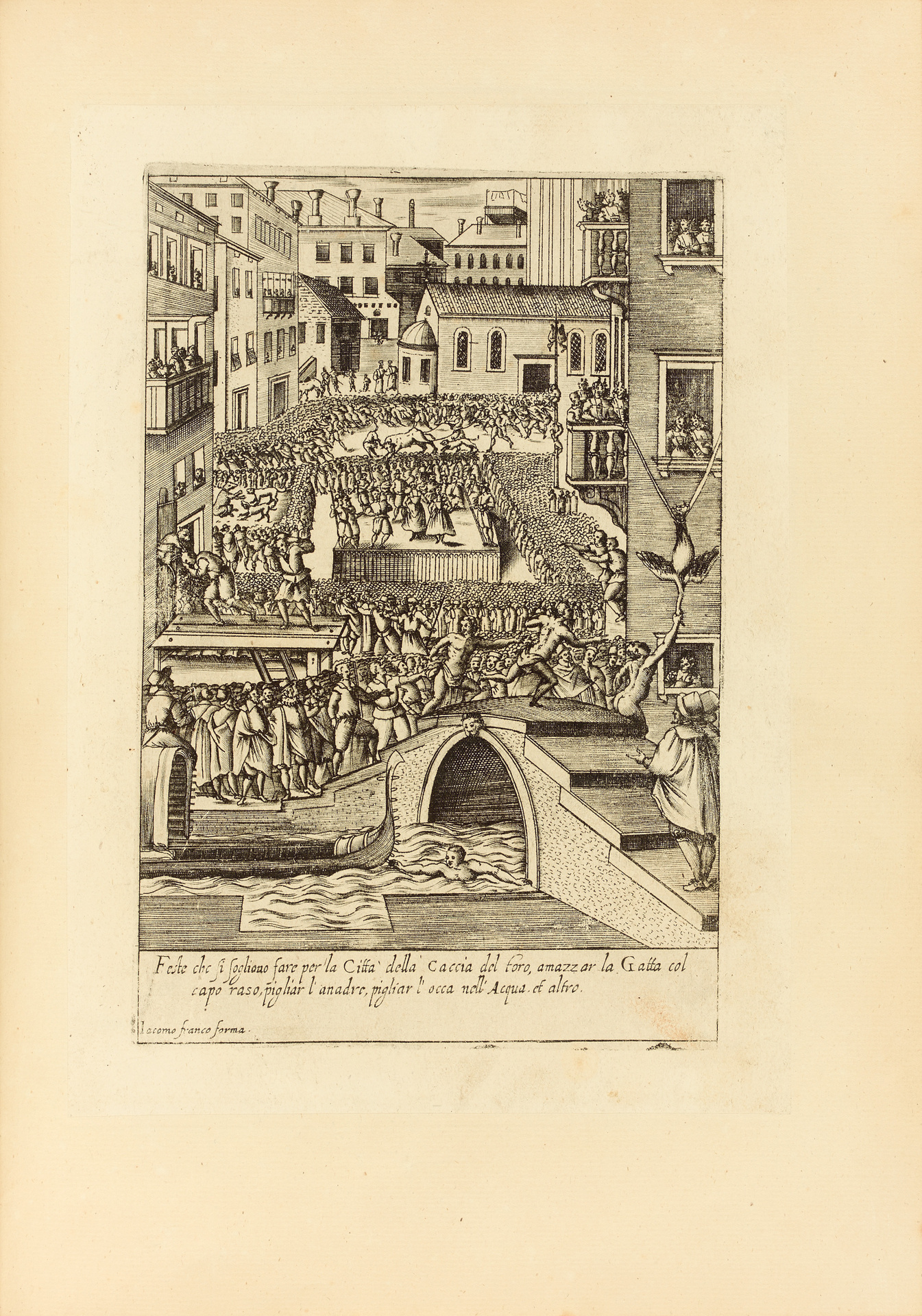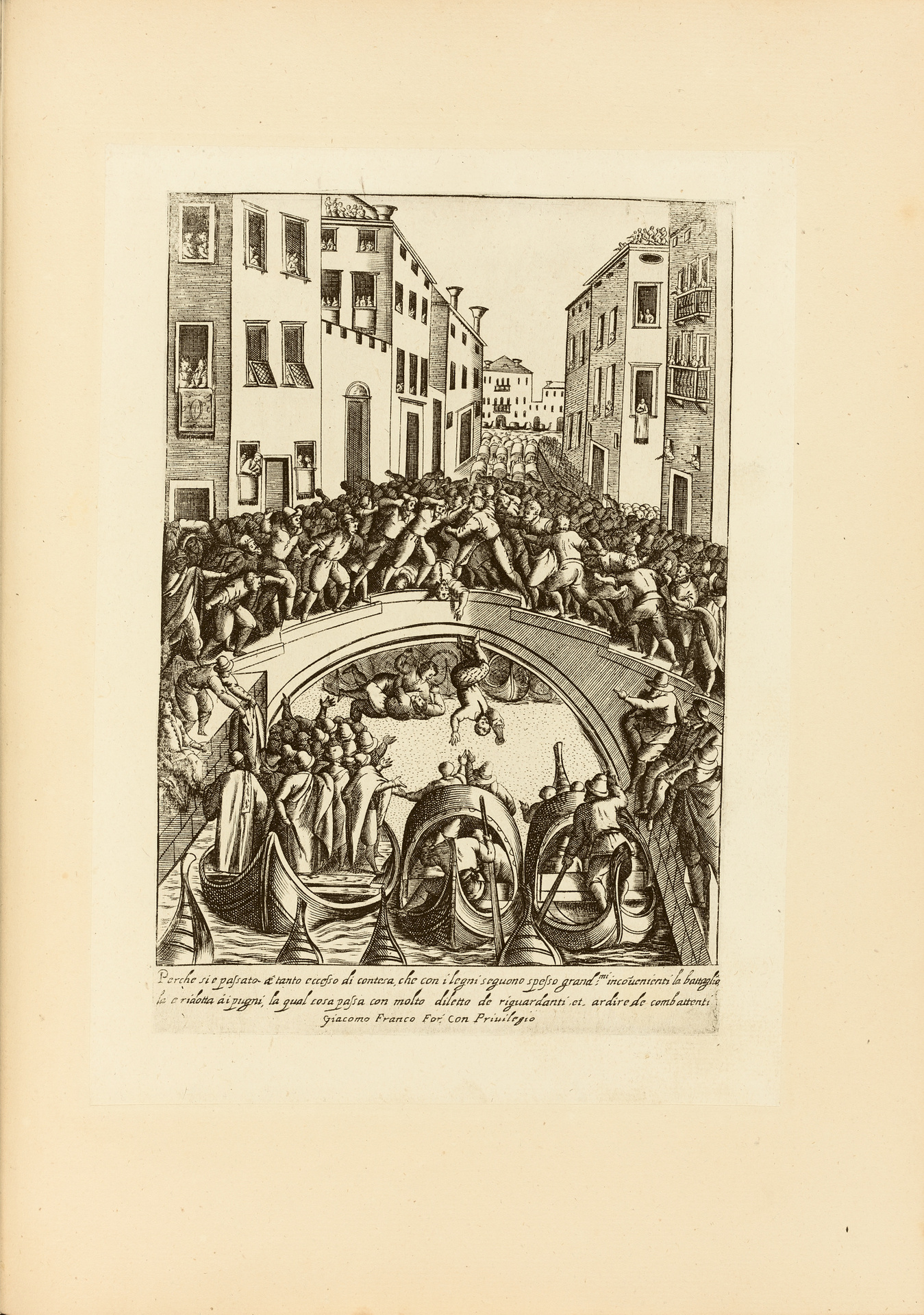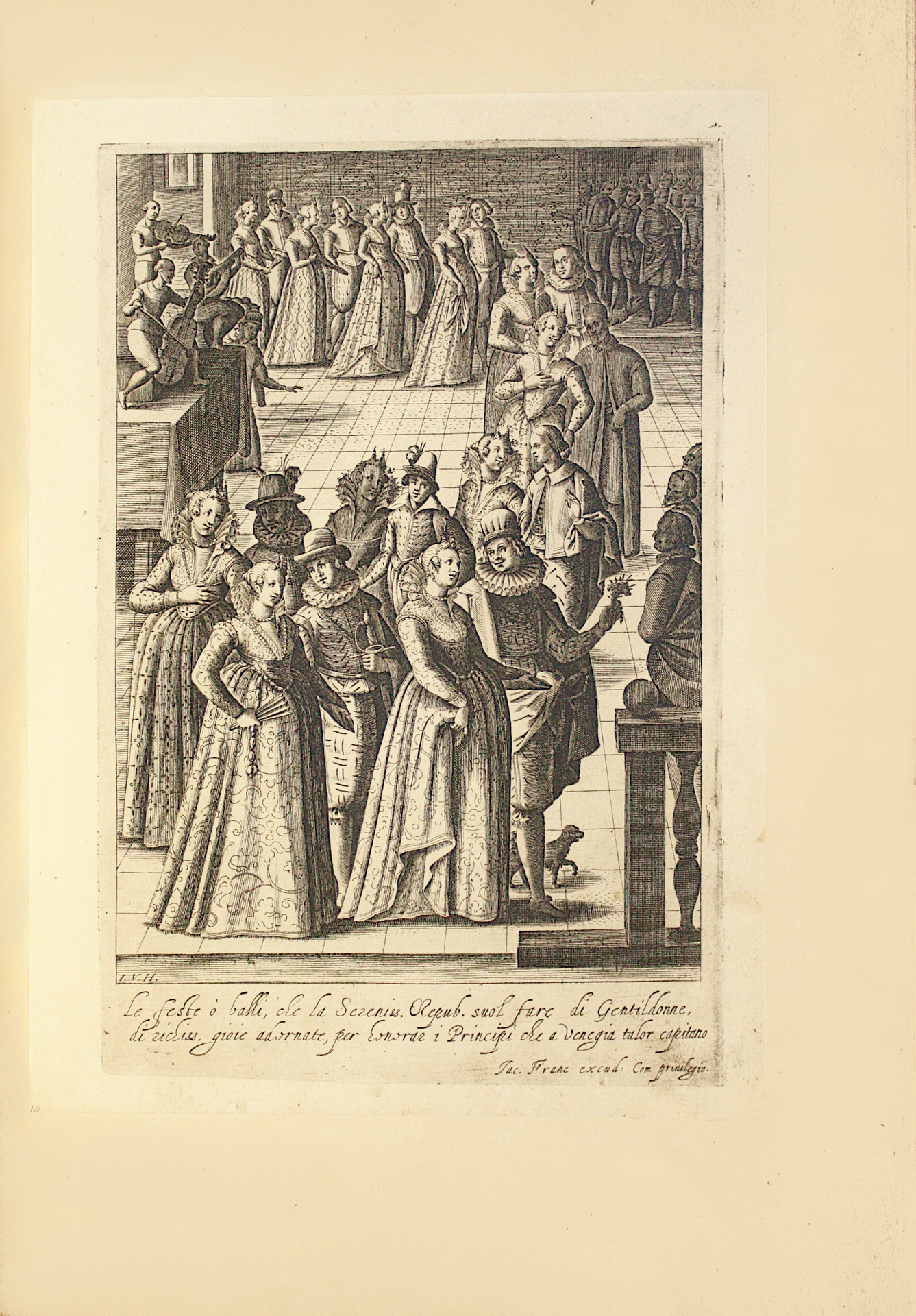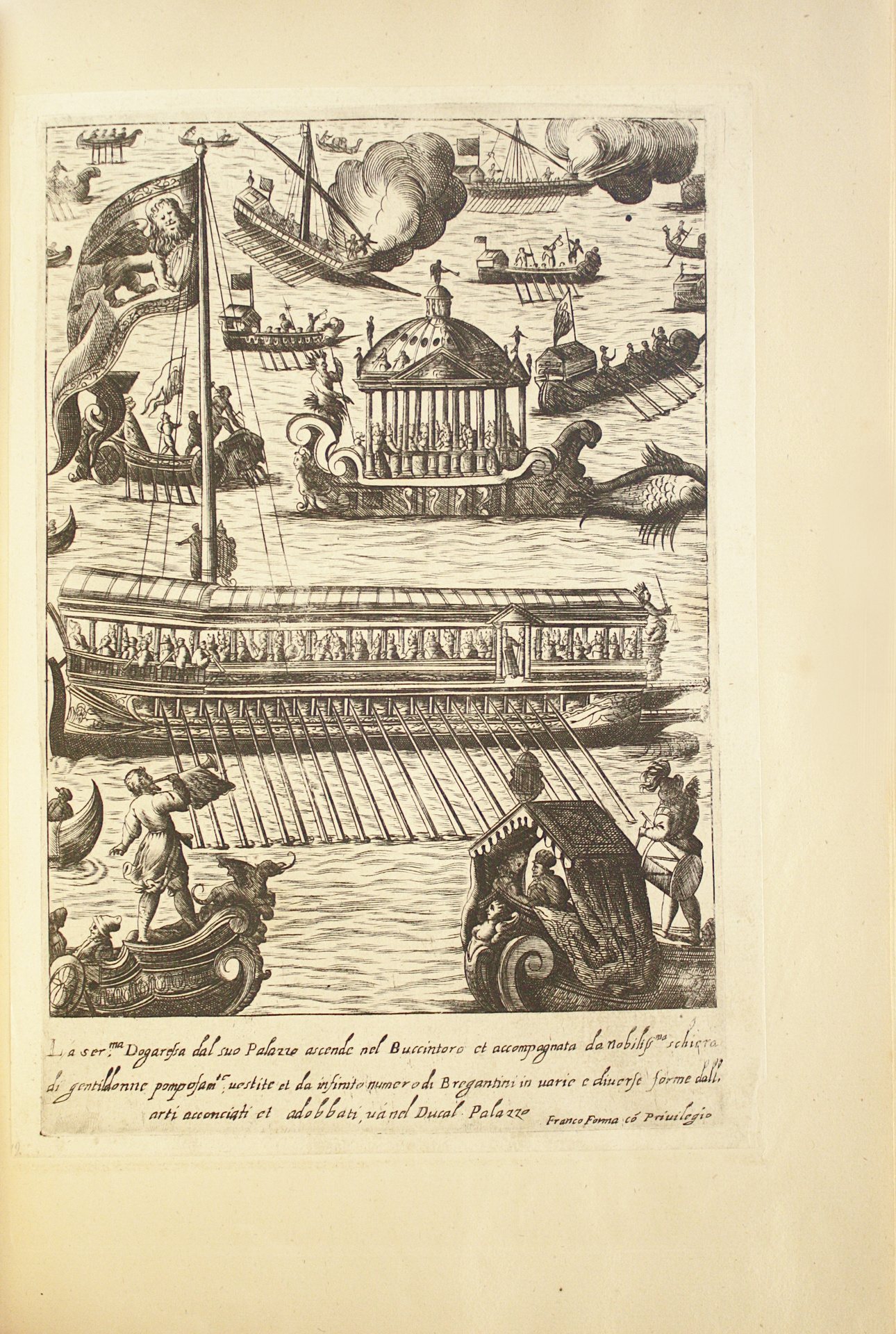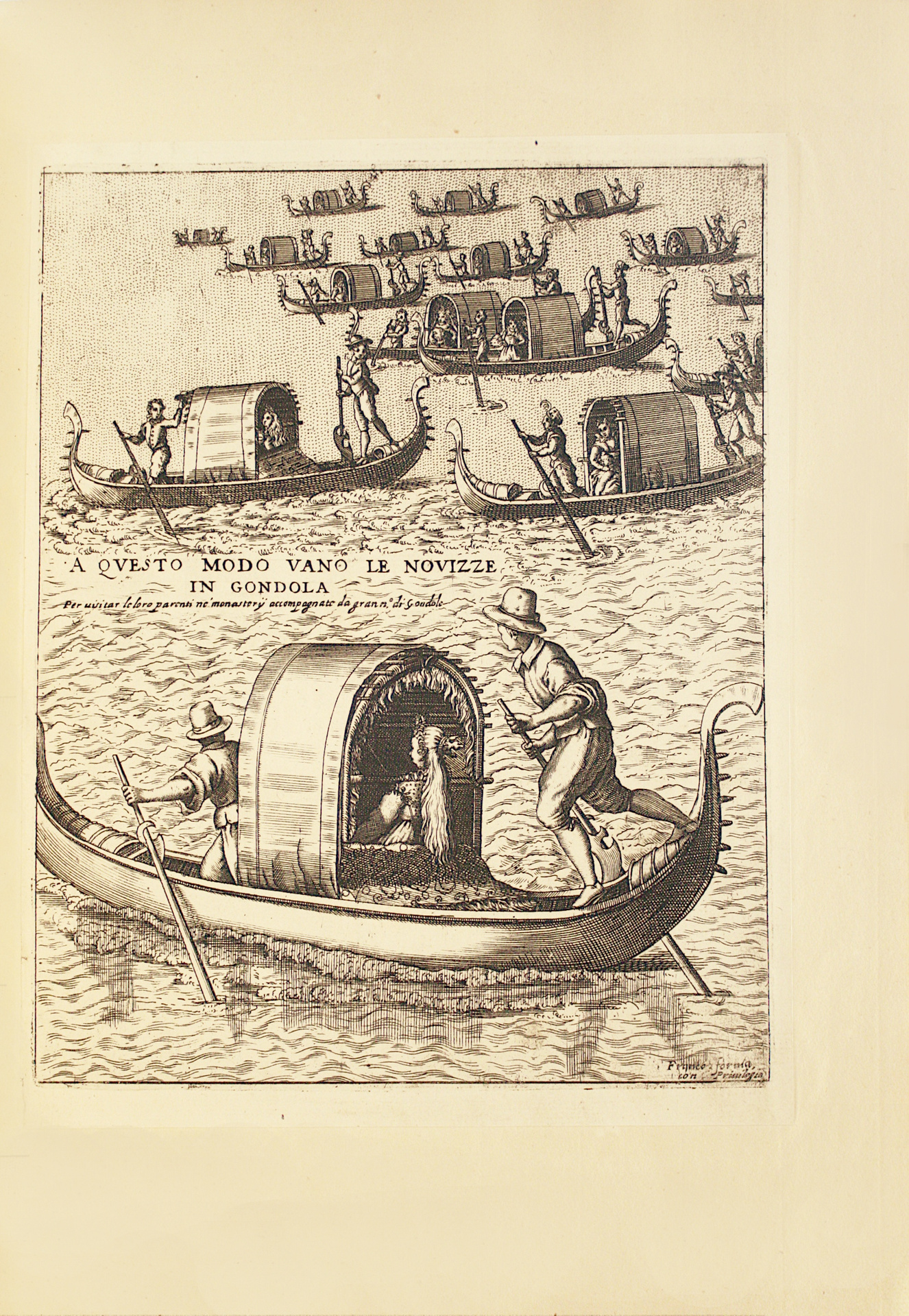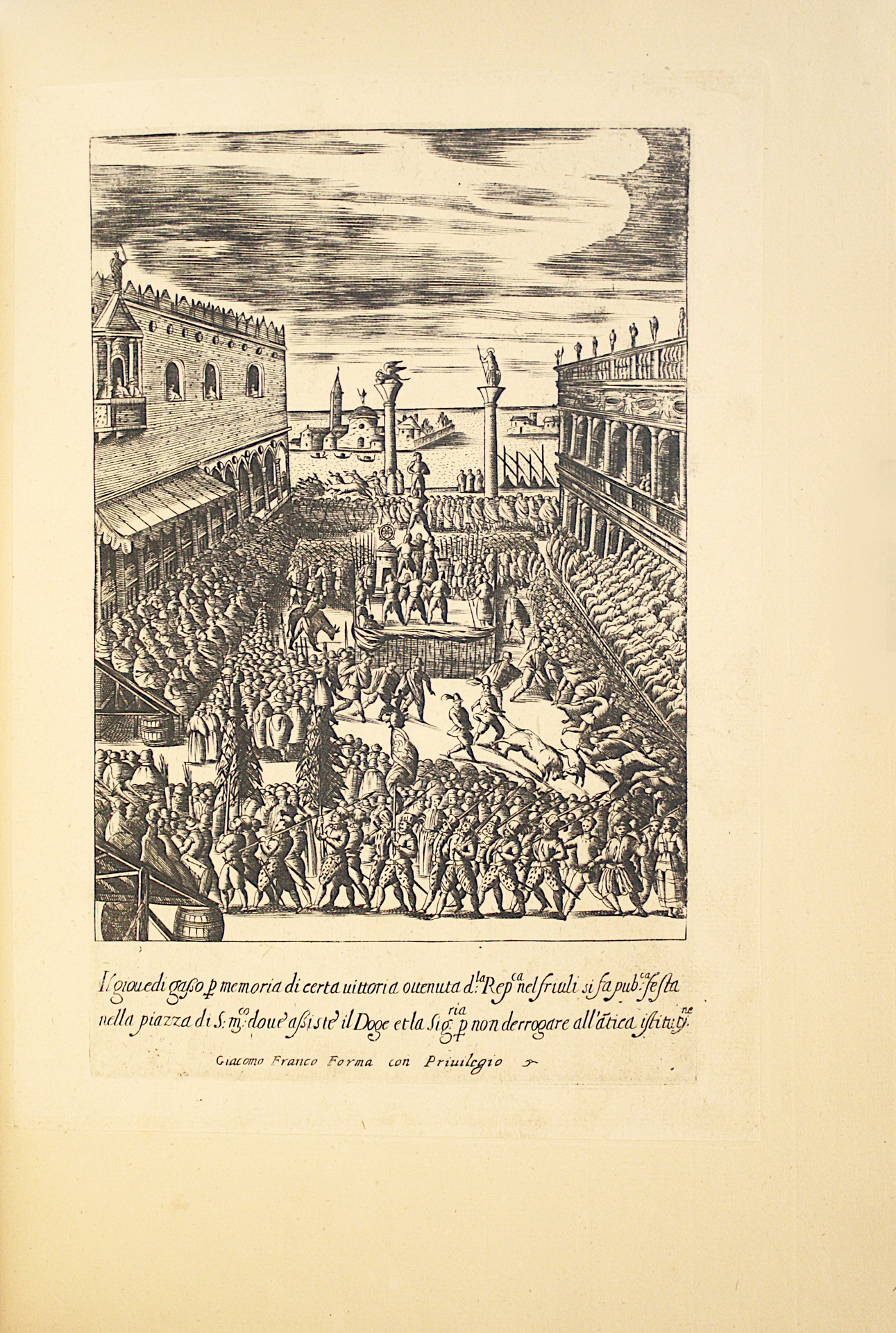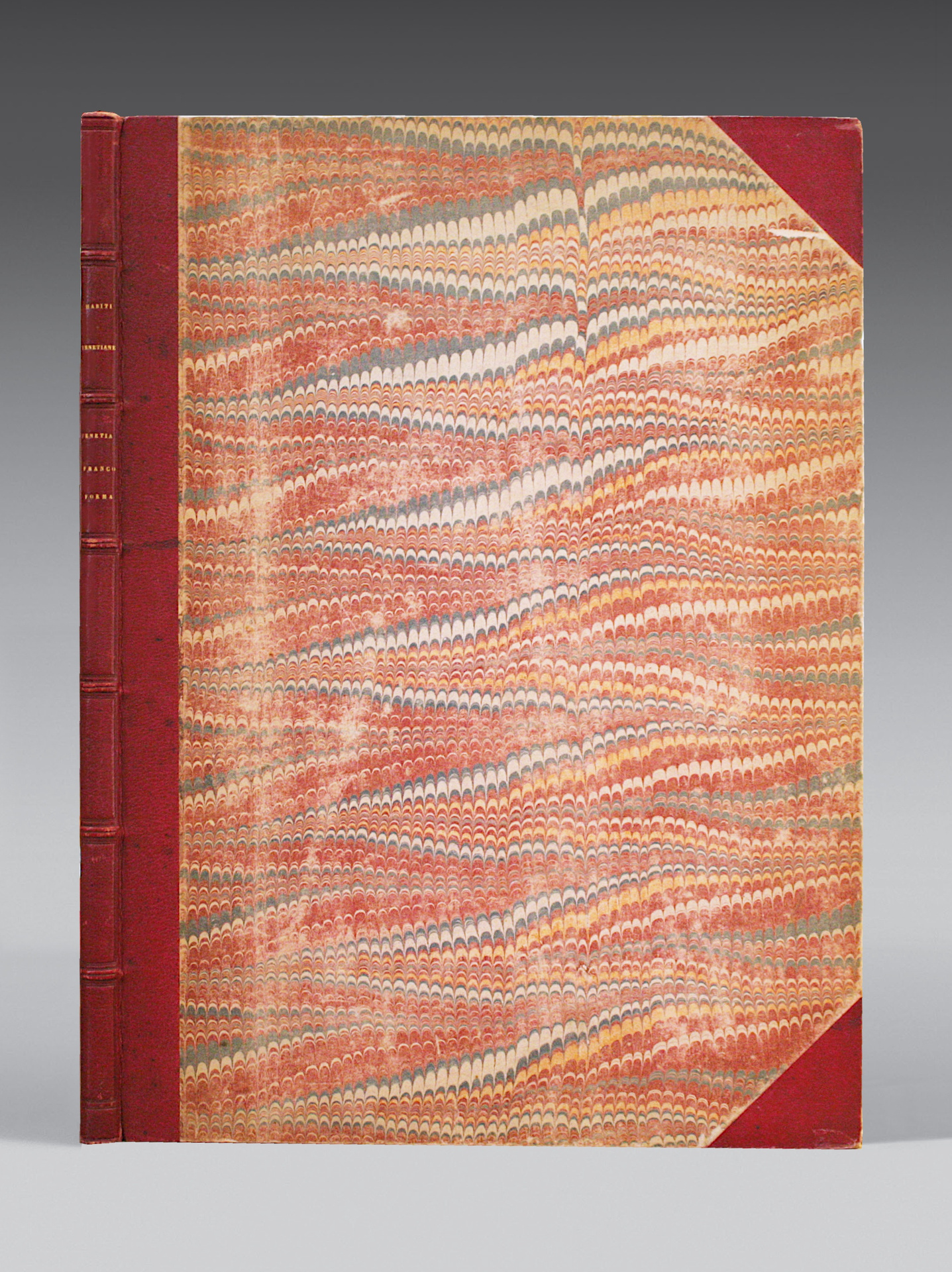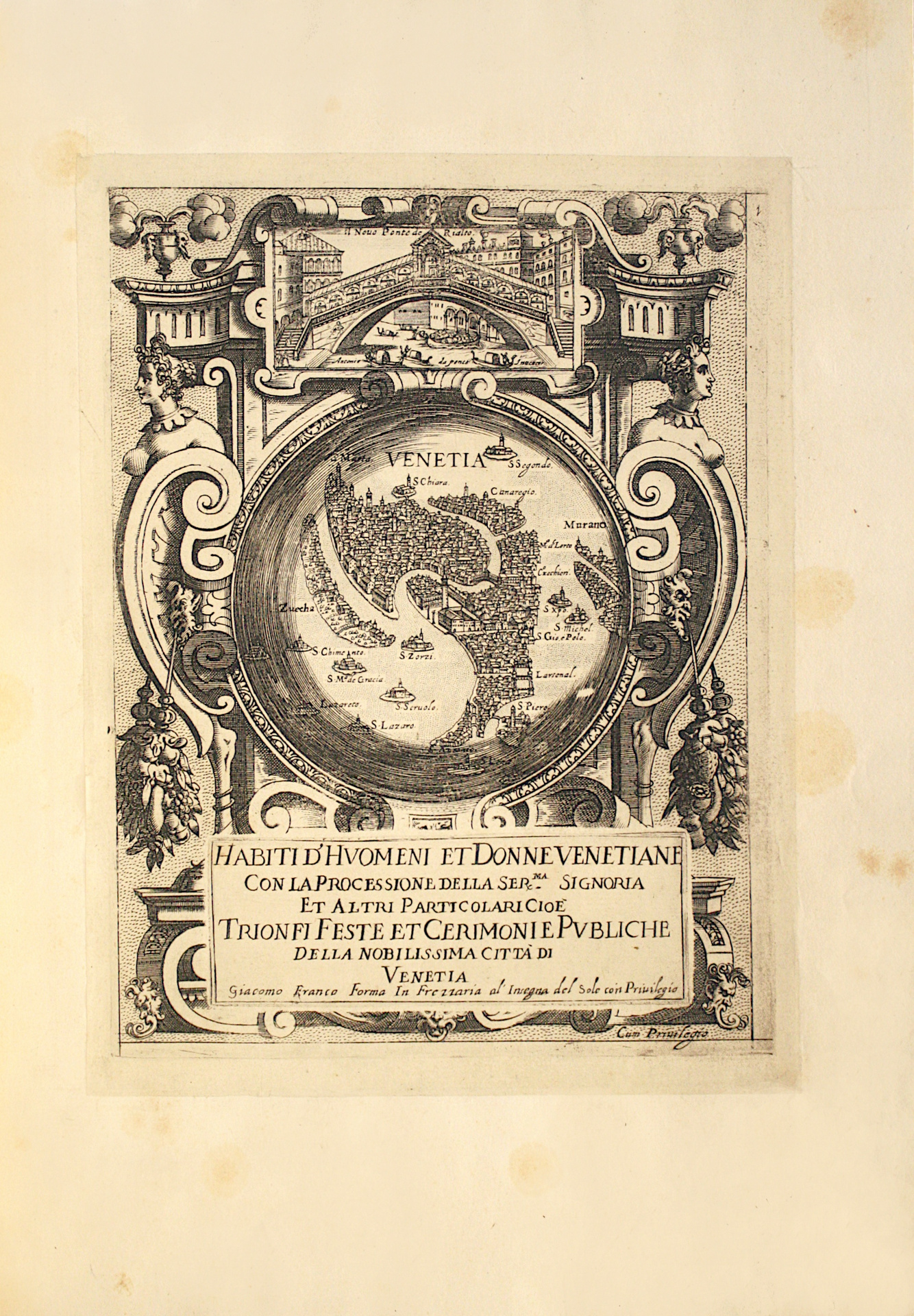Venice, Giacomo Franco Forma in Frezzaria al Insegna del Sole con privilegio, s.d. [1610].
Small folio volume.
“1 . (title engraved with same view of Venice than the one for “Habiti delle Donne”), 1 l. not numbered (dedication to Vincent de Gonzague de Mantoue dated 1st January 1610 and printed in roman characters ), 25 plates out of pagination and not numbered.
Those plates represent 34 figures of men and women in very rich Venitian costumes, life scenes,
festivities.” (Colas, n° 1108).
The present copy includes 1 engraved title with a view of Venice and 24 plates bearing 30 figures of men and women; the dedication leaf and one plate including 4 figures are missing but the number and sequencing of the engravings vary greatly between copies of the same edition (“this fine collection of detailed views and scenes of Venetian life and costume was issued with varying numbers of plates”). Some foxing in the margin of the frontispiece. All mounted on large paper and bound around 1850 by Duru in red quarter morocco.
360 x 260 mm. Dimensions of the engravings: 258 x 190 mm.
Very rare first edition of one of the most famous books on Venice, its festivities, costumes and activities around 1600.
Colas, Bibliographie Générale du Costume, n°1108, col. 384-5; Katalog Der Freiherrlich Von Lipperheide’schen Kostümbibliothek (repr. 1963), n°1324, p. 527.
This collection is so rare that Brunet never found a complete copy and only described an incomplete one (Brunet, II, 1378). As for Vinet, he doubts the number of plates, following the number 24 with a “?” (Vinet, col 283, n° 2291).
The copy of the British Museum only contains 20 plates out of 25 and one title leaf is missing.
The book shows in an extraordinary detailed way the various festivities, processions and past times of the city, as well as great moments in its history.
“Assimilated to the genre of the costume book, the work by Giacomo Franco (1556? – 1620), drawer and engraver born in Venice, also shows engravings of a strong interest for the history of manners and customs of the Serenissima in the 16th and 17th centuries: festivals, entertainment, maritime games, regattas… and carnival. The 1610 edition is probably the first. The number and order of the engravings vary greatly from one edition to another and between copies of the same edition.
The copy is composed of 26 copper plates including one double plate, all, except one, signed by Giacomo Franco. The engraving named Feste che si sogliono fare per la città della caccia del toro, amazzar la Gata col capo raso, pigliar l’anadre, pigliar l’occa nell’acqua et altro features games with animals: a bear fighting with dogs, a tied up cat, a goose being plunged into water, a duck hanging from a mast and a chased bull. Attested since the Middle Ages, bull hunting is a traditional carnival game in the Renaissance, particularly in Rome and Venice”. (Virtual exhibition organized by the Mazarine Library Libri italiani lecteurs français, “Balls, festivals and banquets”).
“This book of engravings depicts the costumes, festivals, and social life of early seventeenth-century Venetians. There is no text other than a short descriptive sentence at the bottom of each engraving. Major Venetian landmarks are easily recognizable, and the small ovoid map on the title-page is regarded by some scholars as an important example of early Venetian cartography.
Very little is known about the Venetian engraver Giacomo Franco. The son of painter Giovanni-Battista Franco (1510-1561), with whom he began his artistic training at the age of eleven, he worked as a painter, engraver, woodcutter, and dealer in graphics and books. For a while he studied in Bologna with Agostino Carracci (1557-1602). In the early 1580s they opened a private teaching academy that soon became a center for progressive art. In their teaching they laid special emphasis on drawing from life, and clear draughtsmanship became a quality particularly associated with their school.
In 1595 Franco took over his father’s workshop and eventually became a well-known publisher. Although he was not documented as belonging to the booksellers’ or printers’ guilds, he is recorded in 1606 and again in 1619 as belonging to the painters’ guild. Franco’s determination to be recognized as an artist is reflected in his will, in which he refers to himself as a “designer.”
The Habiti d’huomini is a potpourri of depictions of Venetian costumes, processions, and celebrations. Citizens are seen watching regattas, fighting on bridges, conversing in the Piazza San Marco and on the Rialto Bridge, and marching in ceremonial procession into the Doge’s Palace with flags flying and horns and flutes playing. Even the ubiquitous laundry is seen hanging on the line in the background. Men with rifles hunt ducks in the lagoon. The Doge’s mighty Bucintoro warship returns from battle, escorted by gondolas and saluted by cannon explosions. Carnival, of course, has a page of its own, which depicts citizens in masks, some of whom seem to be making best use of the cover of darkness to contact a prospective lover. The appropriately dressed widow is pictured heavily veiled, and a married gentlewoman has two outfits from which to choose, one for inside the house, another for outside. The men are almost as ornately dressed as the women. The Doge, in his palace wearing fine brocade and a crown, moves his hand in a sort of blessing, as – through a window behind him – life in the Piazza San Marco goes on”. (The Boston Athenaeum Museum)
One of the great moments of this frenzied proclamation of the political perfection of Venice is the rite of the trionfo – or ducal procession – where hierarchy, order, harmony and collective respect are the characteristics of this state liturgy.
This urban rite, we could even say ritual, is a great moment in the political life – and in the life itself – of Venice. Indeed, the ducal procession is intended to be a proclamation of the cohesion of the State and its strong structure in the eyes of the Venetians as in the eyes of foreigners who will necessarily receive echoes. The Milanese Pietro Casolo, passing through Venice at the end of the 16th century, was impressed by the unchanging – and disciplined – ordering of these Venetian processions:
In my opinion, one man seemed to rule all things and he was obeyed by all, without resistance. It filled me with admiration as I have never seen such a discipline at similar shows. They walk two by two, behind the doge, in a completely different order from what I have seen in many religious or secular courts where, as soon as the prince has passed, everything goes in all directions and in disorder. Here, in front and behind, everything is as in a perfect order as possible.
The ordering and place of each are not the result of chance but the result of a rigorously thought out and unchanging ceremony. This immutability is demonstrated by the existence of commented engravings, that is to say that the artists note the order of the succession of the characters as an element as perennial as the architectures that frame this ceremony. An example, the engraving of Giacomo Franco which shows us the beginning of the procession which enters the basilica. The frieze arrangement evokes the Roman triumphs of the Ara Pacis or Trajan’s Column.” (Marie-Viallon, The Ducal procession in Venice).
Precious and beautiful copy coming from the library of the 19th century A. Brölemann with ex-libris.
